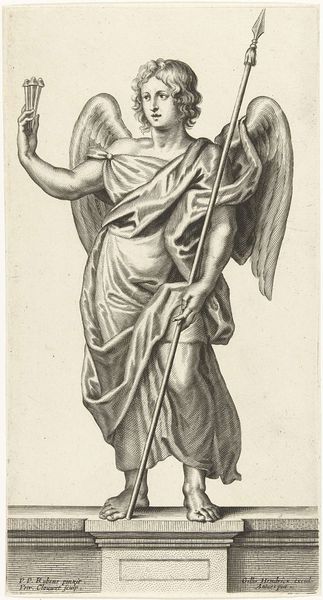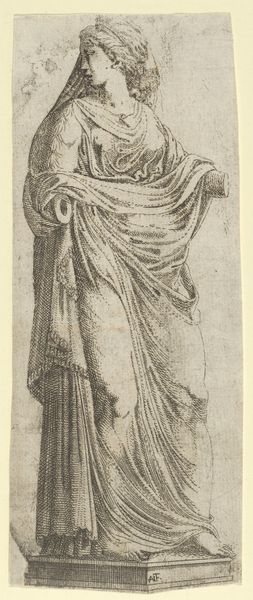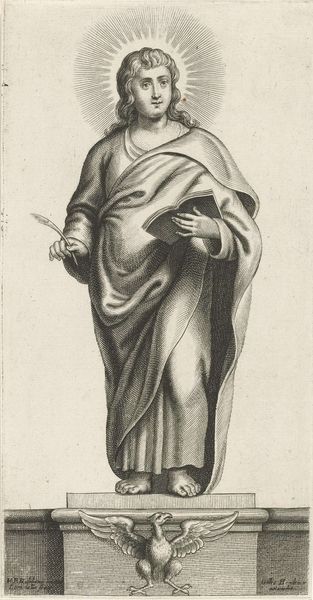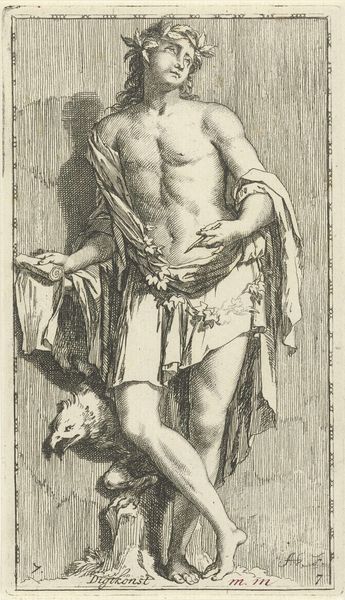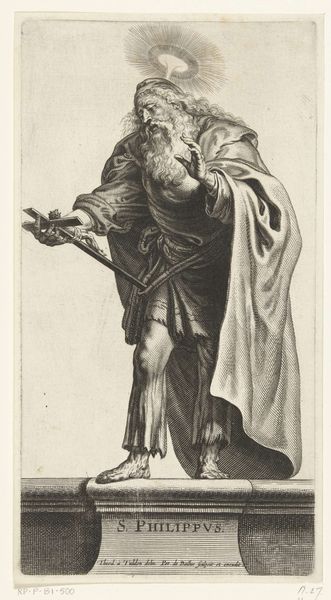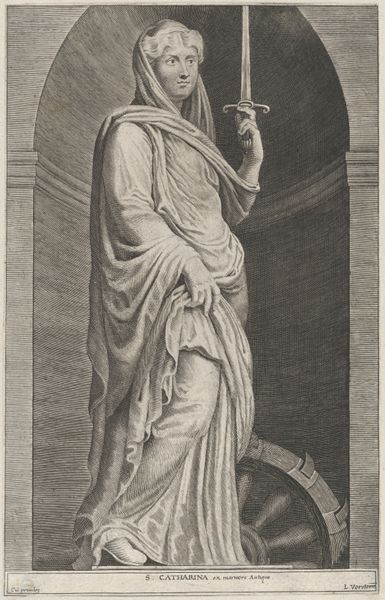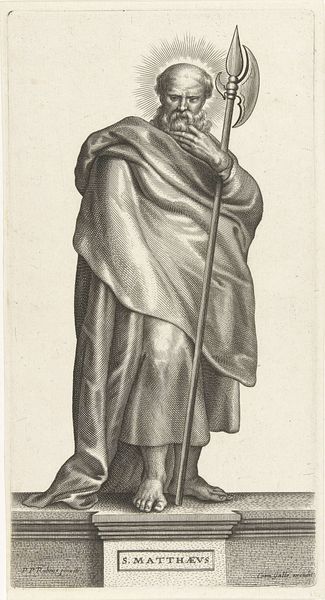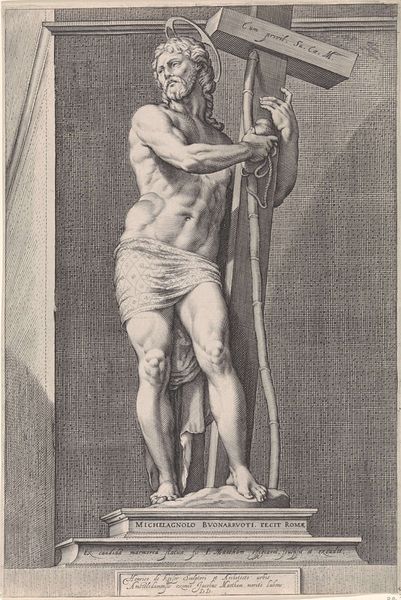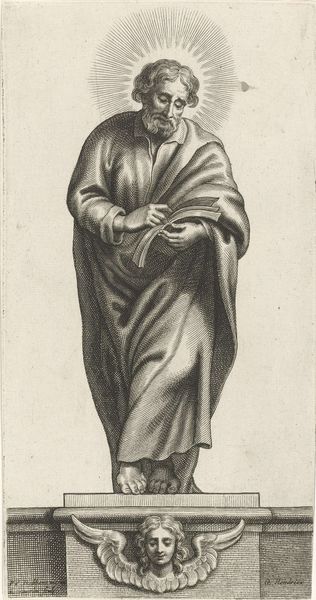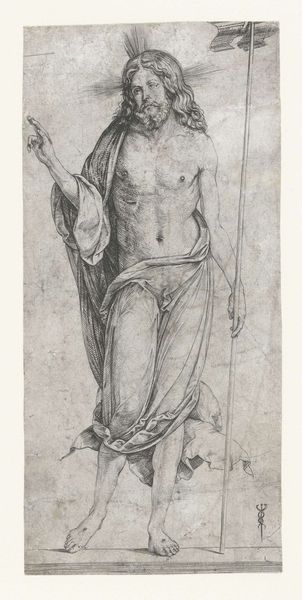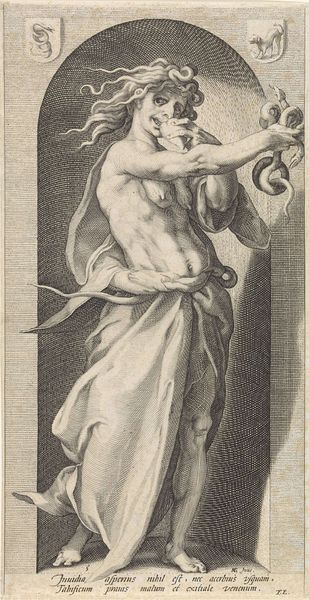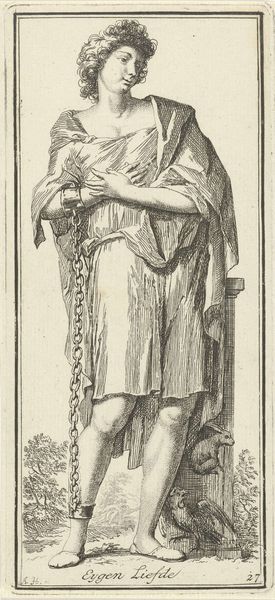
print, engraving
#
portrait
#
baroque
# print
#
figuration
#
chiaroscuro
#
line
#
history-painting
#
engraving
Dimensions: width 428 mm, height 508 mm, width 425 mm, height 504 mm
Copyright: Rijks Museum: Open Domain
This engraving, *Ecce Homo*, was made by Mattheus Borrekens, a Flemish artist, around the mid-17th century. The image depicts Christ crowned with thorns and bound by chains. The work embodies the cultural and religious climate of the Counter-Reformation, a period marked by renewed religious fervor in the Catholic Church. The title, *Ecce Homo*, translates to "Behold the Man," words spoken by Pontius Pilate as he presented Christ to a hostile crowd. Borrekens' image serves as a visual sermon, eliciting pity and devotion from the viewer. Consider the institutional context: engravings like this were often commissioned by religious orders or wealthy patrons, serving a didactic purpose. Prints were widely circulated, making art accessible beyond the elite circles, shaping popular piety. Art historians often delve into period sermons, theological treatises, and devotional manuals to enrich our understanding of works like this. By situating the artwork within its historical context, we can understand its intended audience, message, and broader cultural impact.
Comments
No comments
Be the first to comment and join the conversation on the ultimate creative platform.
